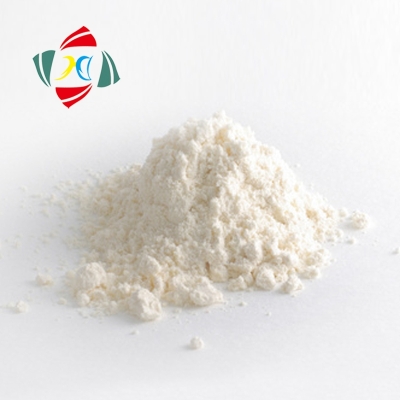-
Categories
-
Pharmaceutical Intermediates
-
Active Pharmaceutical Ingredients
-
Food Additives
- Industrial Coatings
- Agrochemicals
- Dyes and Pigments
- Surfactant
- Flavors and Fragrances
- Chemical Reagents
- Catalyst and Auxiliary
- Natural Products
- Inorganic Chemistry
-
Organic Chemistry
-
Biochemical Engineering
- Analytical Chemistry
- Cosmetic Ingredient
-
Pharmaceutical Intermediates
Promotion
ECHEMI Mall
Wholesale
Weekly Price
Exhibition
News
-
Trade Service
the development of wheat flower medicine and pollen grainsthis experiment took wheat as the material and took the permanent preparation of flower medicine in different development periods to observe the development process of wheat flower medicine and pollen. The wheat spike at the appropriate stage of development was also taken to observe the process of subtracting the mother cells of wheat pollen and the process of developing from small spores into mature pollen grains.wheat in northern China is reduced by 2-5 cm when the leaves are drawn out of the leaves from late April to early May. At this time, the length of small flowers in different parts of wheat spike is about 1-2 mm. Take the wheat spike at this time different parts of the small spike fixed
slice
, you can get the subtracting of different stages of division and small spore period of wheat flower medicine production. A fixed wheat spike can also be used as a smear material to observe the subtracting process. Around May 10, wheat began to flower, wheat spike in different parts of the flower length of about 2-3 mm, fixed can be produced from single-core pollen grains to mature pollen grains of the production. and for smear observation.wheat has three males in each small flower. Each flower medicine consists of four pollen sacs. The wheat flower wall layer also consists of four different layers of cells, the outer outer layer is the surface cortical layer, inwards is the medicine indoor wall, the middle layer and the velvet felt layer, while the middle layer is only one layer of cells. Wheat pollen grains are three-celled, i.e. mature pollen grains contain a large number of nutrient cells and two sperm. When observed, the development of lily and pollen grains can be compared to understand their commonality and differences.(i) The observation of wheat flower pills in different developmental periods1. During the period of pollen mother cells, the permanent production of this period is generally the cross-cutting surface of the small spike. First observe the full picture of the production under the low-fold object lens. Small spike cross-cutting surface can include 1-3 small flowers. Distinguish between tablets, , , flower medicine and children's rooms or columns and other parts. Select the flower drug cross-section in which the development period is appropriate for careful observation. Wheat flower medicine consists of four pollen sacs, with a drug compartment in the middle, and a one-dimensional tube bundle through the center of the drug barrier. The wheat flower wall layer in the period of pollen mother cells has been significantly differentiated, with a total of four layers of cells, followed by the outer and inward skin, the medicine chamber wall (fibre layer), the middle layer and the velvet felt layer. The skin cells are arranged tightly, relatively small, and slightly flat. The wall cells in the medicine room are larger. The middle cells are flat on the cross-cutting surface, with only one layer, which is easily different from the other layers. The velvet layer cells at the innerst layer of the flower wall layer are significantly larger in volume, have a strong cytoste, and sometimes have two nucleies in one cell, so they are easy to identify. The chamber cavity is arranged with a circle of pollen mother cells, with significantly larger nuclei, and sometimes some pollen mother cells in the potion have entered the pre-desection division I. In general, 315 or more pollen mother cells can be seen in a chamber cavity cross-section.2. In the period of diverge and parting, there is also a distinct period of dmission and split in the formation process of wheat spores, that is, after the first division of subtracting, a new wall of separation is produced, the mother cell is divided into two subcells, called diverges, followed by a second division, and finally the formation of four daughter cells. This small spore formation is called continuous type (another small spore forming mode is simultaneous, is after the first division of subtracting, does not form a new wall, so no separation is formed, and then a second division, the production of four nuclei, and then a new wall, the mother cells are separated into four child cells, such as bean spores occur at the same time). The wheat tessals are arranged in tymical arrangement. Generally in the same medicine chamber pollen mother cells subtracting process is basically synchronized, but there can be a certain degree of difference. Therefore, in the same medicine chamber, sometimes you can see at the same time the two parts, the second split period and the four parts and other different developmental periods.occurs in small spores, the cells in the layers of the wheat flower wall change accordingly. The mid-level cells are squeezed and liquefied as the walls and velvet layers of the drug chamber grow. On the permanent production, the middle layer can be seen as a narrow strip with deep dyeing, with some large blank bubble areas irregularly spaced between the inner wall and the velvet layer. The wall cells in the medicine chamber remain intact. Velvet layer cell volume increased, with obvious dual nucleus, which is due to the velvet layer cells carried out cell nucleation without the formation of new walls, its cytoste thick, deep dyeing, cell near square.3. The development of single-core pollen grains in wheat during the single-core pollen grain period (Figure 43-1,C) was similar to that of lily pollen grains. After the spores are releasedthe tessum wall, the volume increases and further forms the pollen interior, outer wall and a germination hole. At the same time, the degree of cytostic fluid foaming increased, gradually forming a central large liquid bubble and pushing the nuclei to one side, to reach the pollen grain single-core edge period. The flower wall layer in this period is different from the four-part period, mainly because the velvet layer cells begin to turn to degeneration. Wheat velvet felt layer is also adenoline velvet felt layer. In the production, cells in certain parts of the flower wall velvet felt layer showed degeneration and the middle cells disintegated further.4. The development of mature pollen grains in wheat during the mature pollen grain period (Figure 43-1,D) is different from that of lilies, and it is formed by the single-core pollen grain after two silky splits. The first silk division results in the formation of a nutrient cell and a reproductive cell, which can also be called the two-core pollen granulation period. The reproductive cells then split again to form two sperm, at which point the pollen grains mature. Mature wheat pollen granules, or male matchosomes, consist of three cells, a large nutrient cell and two sperm, three-cell pollen grains. Under the optical
scope
, two sperms in mature pollen grains of wheat can be seen in a new moon-shaped or amusing shape, the vast majority of which are nucleus, dyeing conditions similar to the nucleus of nutritional cells, sometimes easily mistaken for bare nucleus. Under
electron microscope,
can be seen surrounded by a thin layer of cytostytes outside the nucleosphere, which has a certain number of cytostes. Sperm sinks into the cytoste of nutrient cells with a prosury membrane. Therefore, sperm is not a naked nucleo, but has a cellular structure.at the same time that pollen grains mature, the velvet felt layer cells in the wheat flower wall layer deteriorate in place in the form of adenophy velvet felt layer, and sometimes some velvet layer cell disintegrination residues can be seen. Middle cells also disintegrate as pollen grains mature. Therefore, the mature wheat flower medicine only has the skin and a layer of cell wall as a band uneven thickening of the drug chamber wall (fibrous layer). At the same time, the interval between the two pollen sacs on both sides of the drug barrier is also opened, and the two chambers are connected into one. Finally, the mature flower medicine cracks by vertical cracking, and the pollen particles are scattered from the crack.。 (ii) Smear observation of the process of de-dividing the mother cells of wheat pollen and the development of pollen grains the basic structure of wheat spikes, small spikes and small flowers has been observed in experiments 38. There are differences in the development of males in small flowers in different parts of wheat spike. Generally, the middle spike develops first, then gradually up and down in turn, while each small spike develops first. If you can choose a suitable young spike, you can use a young spike on different parts of the flower in the flower medicine, check from pollen mother cells to subtract the different periods of the situation, you can carry out the whole process of subtracting the observation. Generally to choose the spike before 7-10 days or so of the young spike fixed, observation is appropriate. The flower medicine of small flowers in different parts of wheat spike 2 to 3 days before the fixed flowering can be observed from single-core pollen grain to mature pollen grain during the development period.Take pre-fixed wheat larvae or fresh materials, in the order in which the small spikes are arranged on the wheat spikes, peel the flowers from the bottom up from the first and second small flowers in each small spike, and smear them with acetic acid-magenta solution or kabao magenta solution for smear observation.operation of the smear is as follows: add a drop of acetic magenta (or capo magenta) solution to the scrubbed slide and place the peeled wheat flower medicine in the acetate magenta solution on the slide. Use tweezers and anatomical needles to tear apart the flower medicine, try to squeeze out the pollen mother cells or pollen particles, discard the flower wall, cover the slide. The slides are then slightly
heated
on the alcohol lamp to destroy their cytostics and make the background clear (if you use carbohydrate, the heating step is omitted, but the dyeing time is slightly longer). After heating treatment, place the slide flat on a thick
filtration paper
and cover it with a thick filter paper to gently squeeze the cover slide with your thumb, taking care not to misaltice the cover slide when squeezing. Coarse filter paper absorbs excess dye. The production can then be viewed under the lens.Observation is first examined under the low-fold objector, we should pay attention to the somogeneic cells of the flower wall layer and different periods of development pollen mother cells, looking for the more concentrated parts of pollen mother cells, moved to the center of the field of vision, and then converted to high-fold objectoscope carefully observed. The development period of pollen grains in the flower medicine was determined against the process of subtracting the mother cells of wheat pollen and the map of pollen grain development.(iii) Observation of the overall sealing of a number of plant pollen through the observation of the overall seal of plant pollen such as oil pine, sunflower, lilac, Hehuan, moon grass, etc., to understand the diversity of pollen patterns.。







